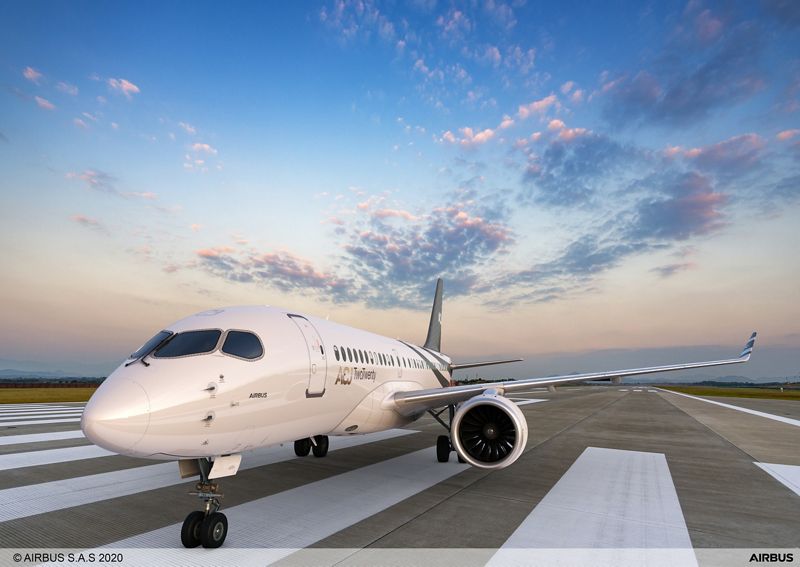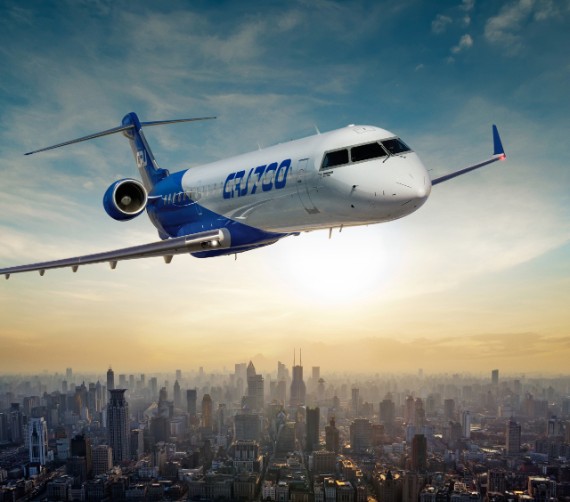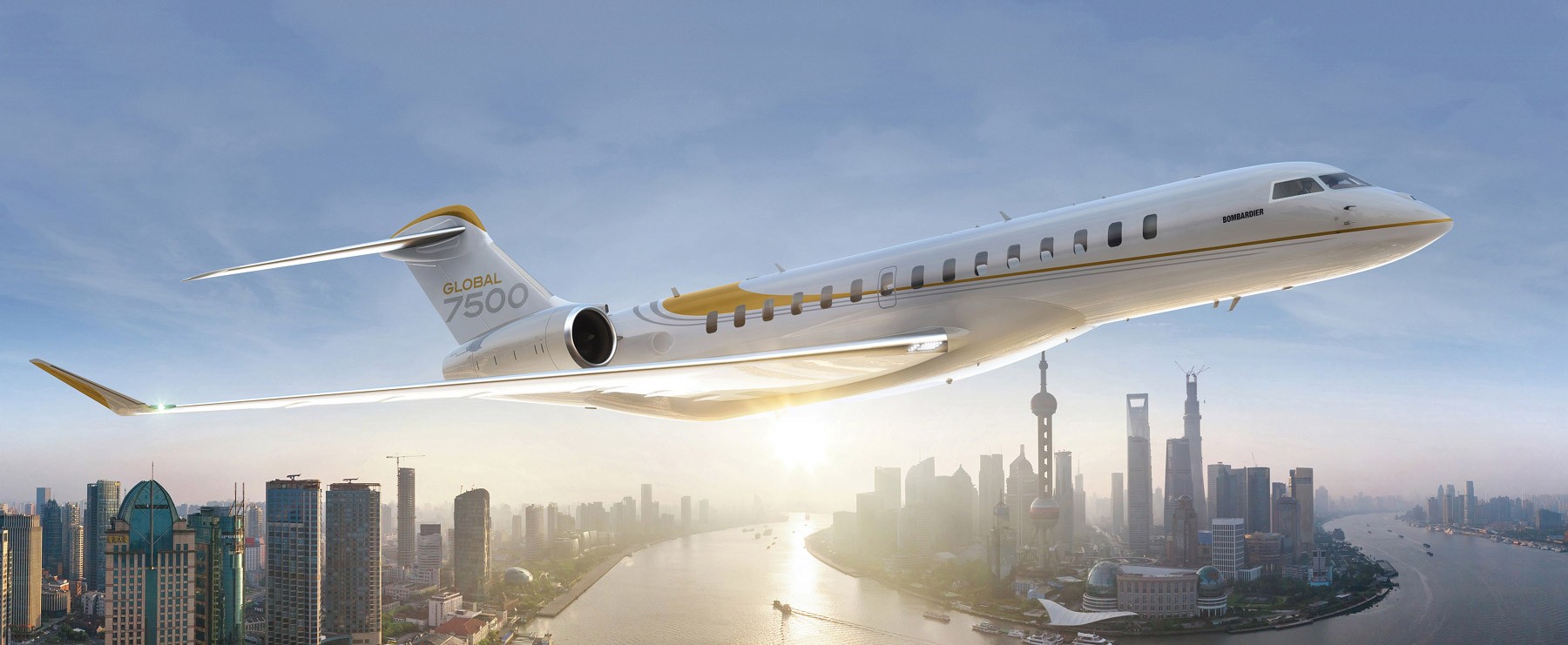Leeham News and Analysis
There's more to real news than a news release.
Leeham News and Analysis
Does an Airbus A220-500 need a new wing and engines?
Subscription required
By Bjorn Fehrm
May 1, 2025, © Leeham News: For years, the debate has been going on about when Airbus will complement the A220-100 and -300 with a longer, higher-capacity A220-500.
In fact, the Bombardier team that designed the A220 as the CS300 already foresaw the prospect of a longer -500. The latest discussions have been around how much to stretch and whether a new wing and stronger engines are needed if the A220-500 replaces the A320neo in the Airbus lineup.
We use the Leeham Aircraft Performance and Cost Model (APCM) to examine the design data for the A220-100 and -300 and determine whether a stretched -500 would benefit from a new wing and stronger engines (which would then be the CFM LEAP-1Bs used on the Boeing 737 MAX).
Summary:
- The A220 started life as the CSeries, designed to compete with Embraer’s E-Jet E2.
- It has since added range through increased Maximum Takeoff Weights to enter the single aisle segment range-wise.
- A stretched A220 would expand the present A220 series upwards and potentially replace the A320neo for Airbus.
- We start by comparing the A220 to the E2, then we move on to examining whether an A220-500 can successfully replace the A320neo.
Posted on May 1, 2025 by Bjorn Fehrm
Are the world’s regional airlines dying?
Subscription Required
By Scott Hamilton
June 17, 2023, © Leeham News: Is the regional airline market across the globe dying?
Many think so. Certainly, the market demand for the regional jet is shrinking in the 10- and 20-year market forecasts. Bombardier withdrew from the market as demand for its aging CRJ family shriveled. Mitsubishi Heavy Industries killed its RJ SpaceJet program as delays and development costs mounted. Bombardier also exited its turboprop airliner business. ATR is now the sole producer of large turboprops outside China and Russia.
Embraer is now the sole producer of regional jets outside of China and Russia, and it doesn’t even want to call the E-Jet a regional airliner.
Regional airlines in the US face a continuing and growing shortage of pilots. Those in Europe face pressure from environmentalists to the governments to ban short-haul flights in favor of trains.
Despite these challenges and the conclusions of some that the regional airline business is dying, regional carriers take exception to these conclusions.
One regional airline official even took exception to the CEO of Delta Air Lines, who concurred with the dead-and-dying trend.
Speaking at the Aviation Week MRO Americas conference in April in Atlanta, Ed Bastian noted that Delta began trending away from regional carriers many years before.
Posted on June 17, 2023 by Scott Hamilton
The Airbus A220-500, a deep-dive analysis: The launch date challenge
Subscription required
By Bjorn Fehrm and Vincent Valery
Jan. 30, 2023, © Leeham News: In the previous articles, demand in the Airbus A320 family gradually shifted from the smaller A319 and A320 to the larger A321. This shift is laying the groundwork for the arrival of the A220-500.
Airbus can develop the A220-500 with relatively minor technical modifications that are not extremely challenging. In an aircraft performance analysis, we saw that the light aircraft weight gave the A220-500 an advantage against the A320neo and 737-8.
What is then preventing Airbus from launching the A220-500 now? While most of the attention has been on the cannibalization risk with the A320neo and the lack of urgency given Airbus’ market share lead, other and more critical factors, in LNA’s opinion, are at play.
Being an aircraft OEM is not just about designing airplanes that meet payload-range requirements and satisfy stringent safety regulations. It is also about efficiently building aircraft with millions of parts and consistent production rates. The recent challenges OEMs are facing ramping up after the Covid-19 pandemic show that aircraft production is far from a walk in the park that can be taken for granted.
It is common for aircraft OEMs to spend as much cash nursing production through the learning curve until the first profitable delivery as developing the aircraft itself.
The final article on this A220-500 series discusses why Airbus is rightfully cautious about launching the new variant.
Summary
- Current planned A220 production rates and variants can satisfy demand;
- Adding the A220-500 brings the program to a new demand level;
- Several clients would place large A220-500 orders;
Posted on January 30, 2023 by Bjorn Fehrm
Boeing faces exodus of senior engineers in tight market for talent
Subscription Required
By Bryan Corliss
Nov. 28, 2022, © Leeham News: Boeing’s engineering corps could become further depleted within the next few days, as union-represented engineers and technical workers at the company’s Puget Sound plants face a Wednesday deadline on filing their retirement paperwork.
 If they don’t leave now, individuals could face retirement benefit losses in the hundreds of thousands of dollars.
If they don’t leave now, individuals could face retirement benefit losses in the hundreds of thousands of dollars.
The potential loss of several hundred of Boeing’s most experienced engineers comes at a time when the company is scraping together engineering teams to tackle production problems in Charleston, and in the midst of an industry-wide shortage of engineering talent.
Summary
- Aggressive hiring sparks Brazilian lawsuit
- Engineers face Wednesday deadline
- All aerospace companies need engineers
- Tech industry layoffs won’t help
Read more
Posted on November 28, 2022 by Bryan Corliss
Airbus’ TwoTwenty, its first real business jet
By Bjorn Fehrm
September 28, 2021, ©. Leeham News: When Airbus got the A220 airliner series from Bombardier, it also got the base for a competitive business jet.
Airbus, like Boeing, has produced Corporate Jets under its ACJ (Airbus Corporate Jets) since 1997 by converting its passenger A319, A320, A330, and A350 to one-off jets for Corporations, States, or wealthy individuals.
With the business jet based on A220-100, this changes. It’s no longer a one-off production but a fully-fledged Bizjet like the Gulfstream 650/700 or Bombardier Global 6500/7500, produced in series and with a semi-custom modular interior.
Posted on September 28, 2021 by Bjorn Fehrm
Pontifications: IAI moves to cement lead in 777 P2F conversions
- IAI, Etihad ink Boeing 777-300ER P2F deal.
- De Havilland union sniffs kerosene.
Aug. 30, 2021, ©Leeham News: The agreement last week between IAI and Etihad Airways to open a Boeing 777-300ER P2F conversion line in Abu Dhabi gives a major boost to the burgeoning program.
In addition to the history-making tie-up between an Israeli company and the United Arad Emirates, and a commitment by Etihad to convert 777s to freighters with IAI, the move is a major coup for IAI to win other Arab airline business.
IAI and the former GECAS, which was acquired by AerCap, launched the first 777 P2F program in 2019. GECAS ordered 15 conversions of the -300ER and optioned 15 more.
Posted on August 30, 2021 by Scott Hamilton
Exclusive: Mitsubishi ponders restarting CRJ production
By Scott Hamilton
July 6, 2021, © Leeham News: Mitsubishi is considering restarting production of the discontinued CRJ, LNA confirmed with multiple sources.
Mitsubishi Heavy Industries discontinued production with the completion of the last of the small backlog it acquired with the June 1, 2019, purchase of the program from the ailing Bombardier. The final 15 CRJ900s were completed during the early months of the COVID-19 pandemic. The Montreal Mirabel Airport production line was shut down. The tooling was removed and stored. The buildings were turned over to Airbus, which now uses them for A220 production.
“Our primary focus remains the support of the CRJ operating fleet,” said Ross Mitchell, vice president of Shared Services. “Clearly, the regional jet market is important to us, but we have made no commitment to move forward in this respect.”
Posted on July 6, 2021 by Scott Hamilton
Bjorn’s Corner: The challenges of airliner development. Part 7. Transport Category Aircraft
June 11, 2021, ©. Leeham News: Last week, we scaled a nine-seat aircraft to a 19-seat aircraft and examined some of the pros and cons of such a change. The aircraft are certified to the 14 CFR Part 23 rules in the US, labeled “Normal Category Aircraft“.
This week we scale the aircraft up one step further to understand product certification and operation rules for the larger Transport Category Aircraft (14 CFR Part 25) class.
Posted on June 11, 2021 by Bjorn Fehrm
Mitsubishi’s MHIRJ expanding MRO floor space by 100,000 sf
Subscription Required
Now open to all Readers
By Scott Hamilton
Part 2 of 2. Part 1 appeared here.
Introduction
June 1, 2021, © Leeham News: It’s been one year today since Mitsubishi Heavy Industries (MHI) closed the acquisition of Bombardier’s CRJ program and global aftermarket support system.
 In that year, MHI “suspended” development of the M90/M100 SpaceJet regional airliner, reduced funding by 99% and all but shuttered its business. The entire airline and aerospace supply chain industry believes MHI won’t restart the program.
In that year, MHI “suspended” development of the M90/M100 SpaceJet regional airliner, reduced funding by 99% and all but shuttered its business. The entire airline and aerospace supply chain industry believes MHI won’t restart the program.
But the Bombardier aftermarket business, renamed MHIRJ Aviation Group, appears to be thriving. MHIRJ expanded, opening a consulting business.
MHI also invested $20m in the expansion of its West Virginia and Arizona CRJ MRO lines. The company celebrates the expansions next month.
A small amount to be sure, but it nevertheless reversed the lack of monies by the nearly bankrupt Bombardier.
“We have the biggest regional MRO network in the world out of Bridgeport, West Virginia, and Tucson, Arizona,” said Ismail Mokabel, Senior Vice President, Head of Aftermarket. At both sites, MHIRJ can run about 30 simultaneous aircraft or equal lines of maintenance at any given time, he said.
MHIRJ is adding another 100,000 square feet of space, expanding two new hangars that will be up and running within the next 12 to 18 months. The contract was signed May 27.
Summary
- Regional airline aftermarket MRO business fell 35%-40% during the COVID-19 pandemic.
- MHIRJ profit-and-loss already is at pre-COVID level.
- The company will develop performance improvement packages for CRJ.
- May expand MRO services to other aircraft types after 2023.
Posted on June 1, 2021 by Scott Hamilton
Mitsubishi grows ex-Bombardier business even as SpaceJet rests in limbo
Subscription Required
Now open to all Readers
By Scott Hamilton
Part 1 of 2 Parts
Introduction
May 31, 2021, © Leeham News: June 1 is the first anniversary of the acquired by Mitsubishi Heavy Industries of the Bombardier CRJ program and global support network.
It was on the surface a bittersweet moment.
MHI and Bombardier announced the deal June 25, 2019.
MHI’s aircraft subsidiary, Mitsubishi Aircraft Corp. (MITAC) was then going full steam ahead with the development of the M100 SpaceJet and certification of the M90 SpaceJet, previously known as the MRJ90.
But in March 2020, the COVID-19 global pandemic exploded. By June, MHI put the SpaceJet program in “suspense.” All operations outside Japan were closed and hundreds of employees were laid off. Flight testing in Washington State was terminated. MITAC’s headquarters at Nagoya Airport was shuttered and funding was reduced by 99%. The future of the SpaceJet program is in doubt. MHI says only it will “reassess” during its current fiscal year ending next March 31.
But MHI continued with the CRJ acquisition. After the close, it was renamed MHIRJ.
During the ensuing year, MHIRJ continues to support the global CRJ fleet. It also launched a new advisory/consulting business that encompasses mainline jets, airlines and airports.
Summary
- CRJ customers saw business as usual following the close.
- Pivoting from SpaceJet to advisory-consulting work.
- With SpaceJet in limbo, MHI grows acquisition business.
Posted on May 31, 2021 by Scott Hamilton








